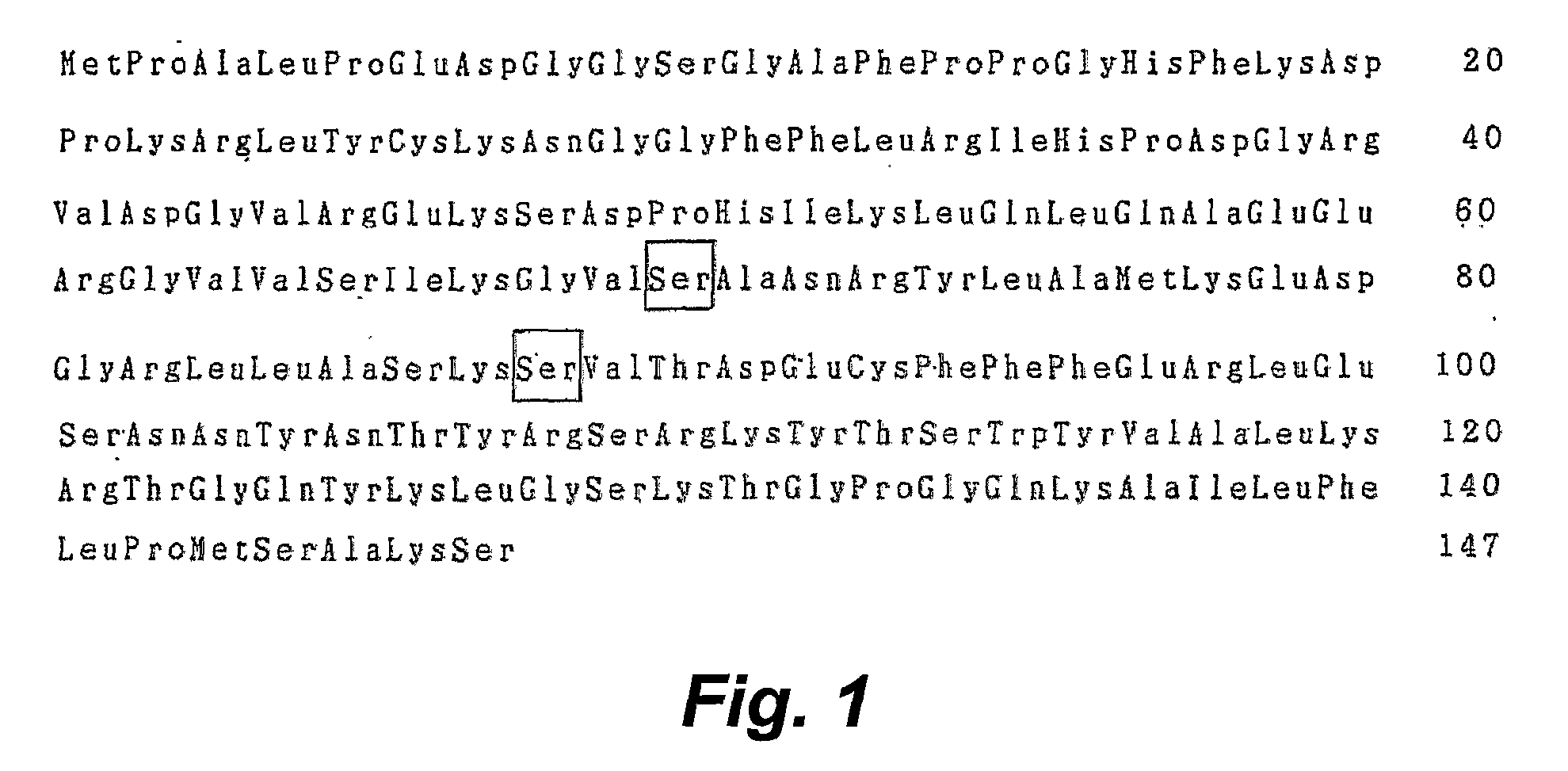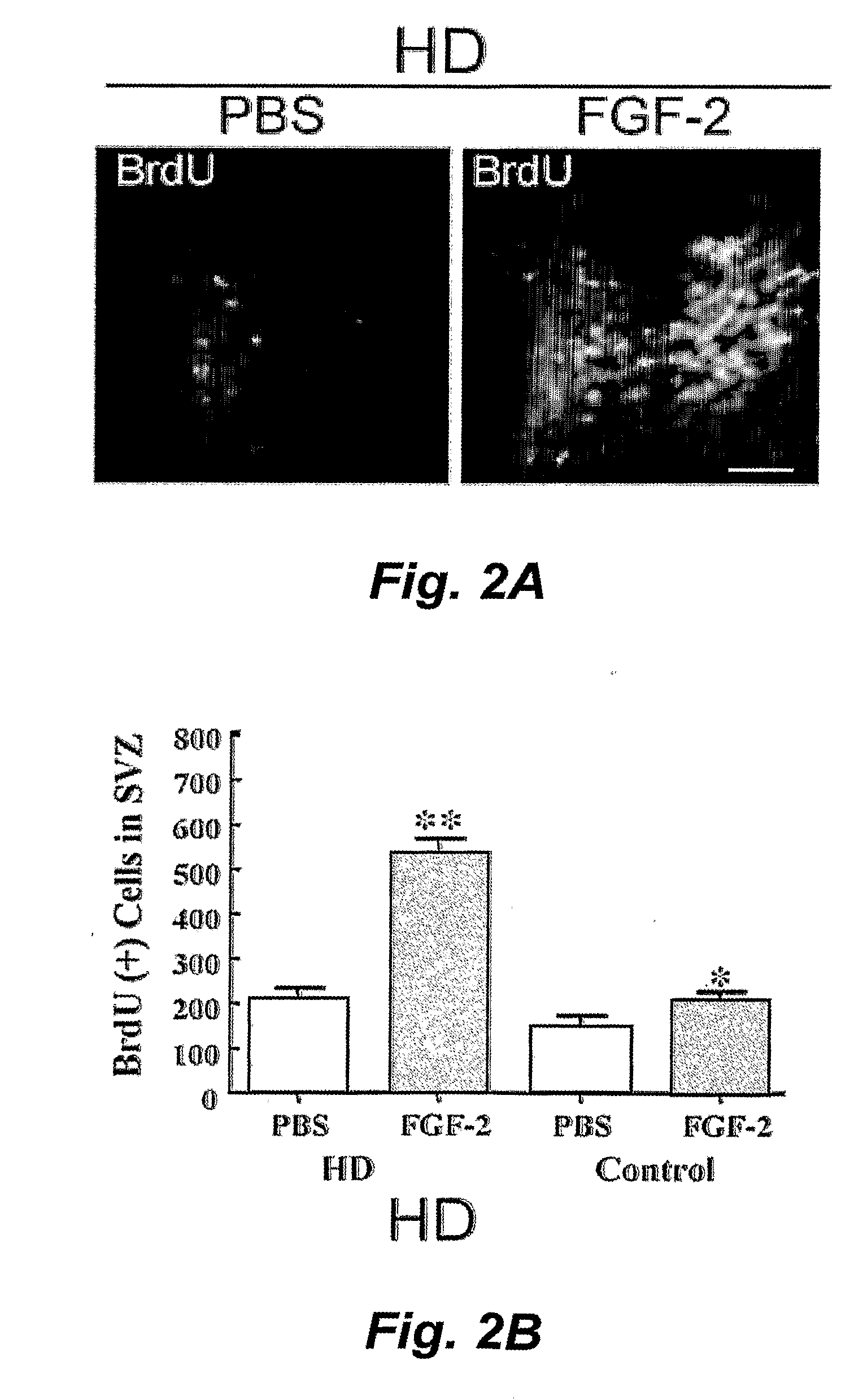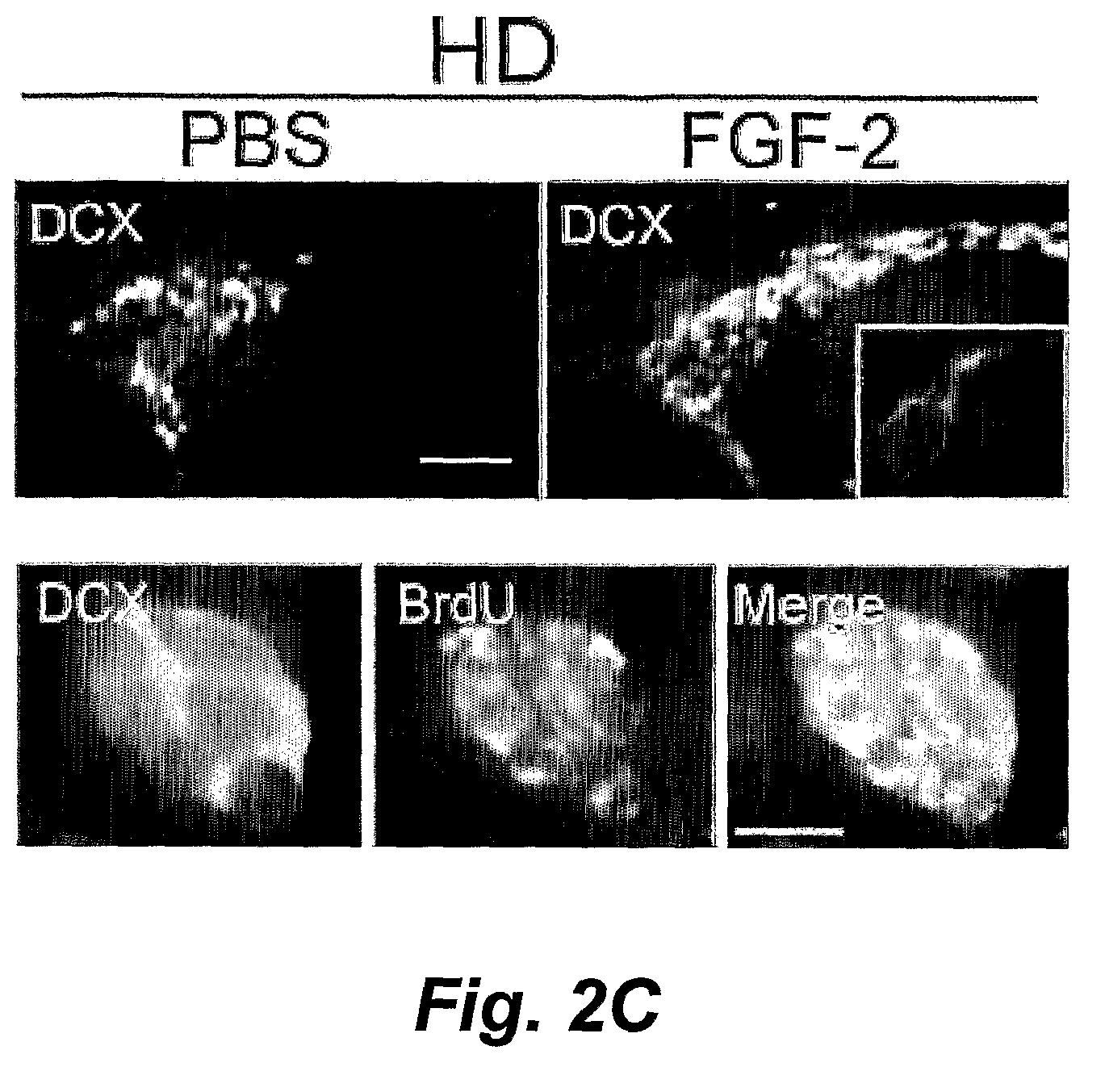Fibroblast growth factor-2 promotes neurogenesis and neuroprotection and prolongs survival in huntington's disease
a growth factor and fibroblast technology, applied in the field of neurodegenerative diseases, can solve the problems of chorea, dementia and early death, no treatment to delay the appearance or progression of the disease, and inability to fully treat the disease, so as to improve the functional outcome, reduce neuronal loss, and increase neurogenesis
- Summary
- Abstract
- Description
- Claims
- Application Information
AI Technical Summary
Benefits of technology
Problems solved by technology
Method used
Image
Examples
example 1
Fibroblast Growth Factor-2 Promotes Neurogenesis and Neuroprotection and Prolongs Survival in a Transgenic Mouse Model of Huntington's Disease
[0107]There is no satisfactory treatment for Huntington's disease (HD), a hereditary neurodegenerative disorder that produces chorea, dementia and death. One potential treatment strategy involves the replacement of dead neurons by stimulating the proliferation of endogenous neuronal precursors (neurogenesis) and their migration into damaged regions of the brain. Because growth factors are neuroprotective in some settings and can also stimulate neurogenesis, we treated HD transgenic R6 / 2 mice from eight weeks of age until death by subcutaneous administration of fibroblast growth factor-2 (FGF-2). FGF-2 increased the number of proliferating cells in the subventricular zone (SVZ) by ˜30% in wild-type mice, and by ˜150% in HD transgenic R6 / 2 mice. FGF-2 also induced the recruitment of new neurons from the SVZ into the neostriatum and cerebral cort...
example 2
Increased Striatal and FGF-Induced Nigral Neurogenesis in the Acute MPTP Model of Parkinson's Disease
[0149]In response to injury, endogenous precursors in the adult brain can proliferate and generate new neurons, which may have the capacity to replace dysfunctional or dead cells. Although injury-induced neurogenesis has been demonstrated in animal models of stroke, Alzheimer's disease and Huntington's disease (HD), studies of Parkinson's disease (PD) have produced conflicting results. In this study, we investigated the ability of adult mice to generate new neurons in response to the parkinsonian toxin 1-methyl-4-phenyl-1,2,3,6-tetrahydropyridine (MPTP), which causes selective degeneration of nigrostriatal dopamine neurons. MPTP lesions increased the incorporation of 5-bromo-2′-deoxyuridine-5′-monophosphate (BrdU), as well as the number of cells that co-expressed BrdU and the immature neuronal marker doublecortin (Dcx), in two neuroproliferative regions—the subgranular zone of the de...
example 3
Mediators of MPTP-Induced Neurogenesis: FGF2
[0179]To test whether FGF2 can stimulate neurogenesis in vivo, FGF2 was interperotineally injected for 10 d and BrdU was injected intraperitoneally for 14 d following acute MPTP administration, and animals were killed 1 week later. Brain sections from SN of FGF-2- and BrdU-treated mice were immunostained one week after the last MPTP injection for BrdU and for markers of mature and immature neurons. These triple-label studies showed that BrdU-immunopositive cells co-expressed Dcx in the SN suggesting that FGF-2 can direct newborn cells in the rostral subventricular zone to the primary site of MPTP-induced injury, the SN (see, e.g., FIG. 11).
[0180]It is understood that the examples and embodiments described herein are for illustrative purposes only and that various modifications or changes in light thereof will be suggested to persons skilled in the art and are to be included within the spirit and purview of this application and scope of the...
PUM
| Property | Measurement | Unit |
|---|---|---|
| Frequency | aaaaa | aaaaa |
| Frequency | aaaaa | aaaaa |
| Frequency | aaaaa | aaaaa |
Abstract
Description
Claims
Application Information
 Login to View More
Login to View More - R&D
- Intellectual Property
- Life Sciences
- Materials
- Tech Scout
- Unparalleled Data Quality
- Higher Quality Content
- 60% Fewer Hallucinations
Browse by: Latest US Patents, China's latest patents, Technical Efficacy Thesaurus, Application Domain, Technology Topic, Popular Technical Reports.
© 2025 PatSnap. All rights reserved.Legal|Privacy policy|Modern Slavery Act Transparency Statement|Sitemap|About US| Contact US: help@patsnap.com



